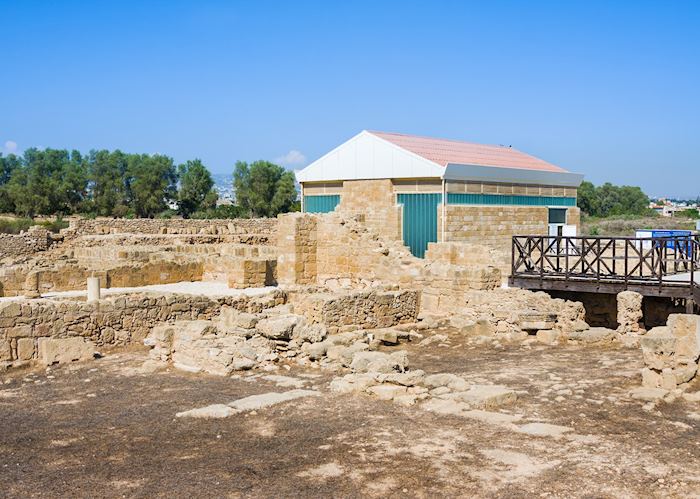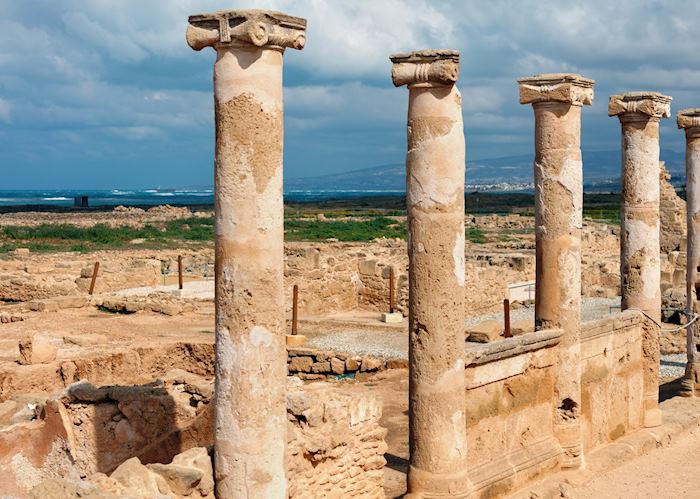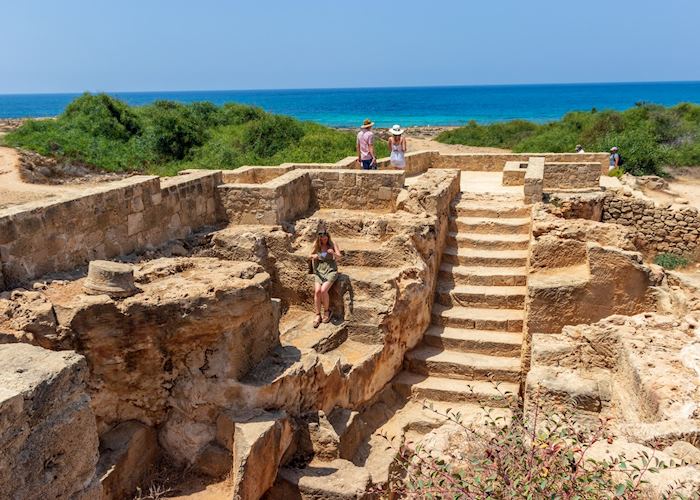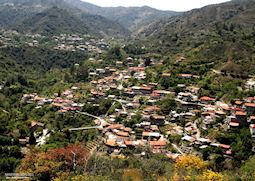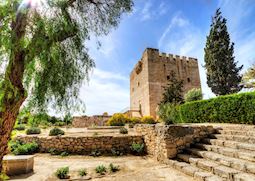Considered the most important archaeological site in Cyprus, Paphos Archaeological Park was declared a UNESCO World Heritage Site in 1980. Within it, you can see the remnants of a once-important ancient Greek and Roman city, and as you spend a morning or afternoon wandering around its sun-baked bricks, you’re transported back to these times of prosperity.
After a brief stop to visit the fishing port at Paphos, you’ll head to the park with a private guide, who’ll help point out each ruin and explain the history behind what you’re seeing. Among them are four Roman villas with astonishingly well-preserved mosaics depicting scenes from daily life in those times, asclepions (ancient Greek healing temples) and a Hellenistic-Roman theatre.
After your visit, your driver will take you a short distance to a nearby necropolis (city of the dead), where you’ll see 4th-century BC burial tombs carved into the rock. Some are decorated with huge Doric pillars — the resting place of aristocrats and high-ranking government officials.
After meeting your private driver and guide from your hotel, you’ll head to the coastal city of Paphos. While you’ll have time to take in its fishing port lined with boats, the main draw of your visit is the archaeological park. The monuments here date from prehistoric through to medieval times, but most are remnants from the Roman era. Your guide will lead you on foot through the park, pausing at whichever sites interest you most as they tell you more about what life was like here centuries ago.
Among the ruins, you’ll see four large and once-lavish Roman villas: the House of Dionysos, the House of Aion, the House of Theseus and the House of Orpheus. The villas are connected by a boardwalk, and as you walk along it you’ll see intricate mosaics from above. Your guide will help you interpret the scenes, some of which depict daily life and animals, while others show Roman gods.
Another highlight is the Odeon, a 2nd-century Roman amphitheatre carved from limestone featuring 12 rows of seating built in a crescent around a central stage.
Once you’ve finished exploring the park, you’ll make a short journey to another UNESCO World Heritage Site just north of Paphos — a necropolis known as the Tombs of the Kings. Carved into the rock, the underground tombs vary from primitive caverns to more elaborate resting places decorated with Doric columns and frescoed walls.
Despite its name, no kings were buried here, but Paphitic aristocrats and high officials are thought to have been laid to rest here up to the 4th century AD.
After you’ve seen the tombs, your driver will take you back to your hotel.


